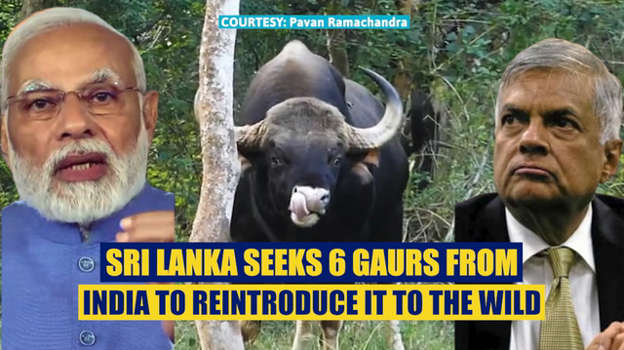INDIAN BISON IN SRI LANKA
Why in News?: Recently, Sri Lanka asked India to translocate 6 Indian Bisons to reintroduce them in the island from where they became extinct by the end of 17th century.
If the project is cleared, it would be the first such agreement between India and Sri Lanka.
What are the Important Facts about Indian Bison?
About:
The Indian Bison or Gaur (Bos gaurus) is the tallest species of wild cattle found in India and largest extant bovine.
There are about 13,000 to 30,000 gaurs in the world with approximately 85% of the population present in India.
The first-ever population estimation exercise of the Indian gaur carried out in the Nilgiris Forest Division in February 2020 estimated around 2,000 Indian gaurs to be inhabiting the division.
Geography:
It is native to South and Southeast Asia.
In India, they are very much prevalent in the Western Ghats.
They are primarily found in Nagarhole National Park , Bandipur National Park, Masinagudi National Park and Biligirirangana Hills (BR Hills).
It is also found in Burma and Thailand.
Habitat:
They prefer evergreen forests and moist deciduous forests.
However, they can survive in dry deciduous forests also.
They are not found in the Himalayas with an altitude greater than 6,000 ft.
They generally stick to the foothills only.
Conservation Status:
Vulnerable in IUCN Red List.
Included in the Schedule I of the Wild Life Protection Act, 1972.
Threats:
Food Scarcity: Due to the destruction in the grasslands, planting of commercially important trees, invasive plant species and indiscriminate grazing of domestic animals
Poaching: For their commercial value as well as due to the high demand of gaur meat.
Habitat Loss: Due to deforestation and commercial plantations.
Human-Animal Conflict: Due to living in proximity with human habitations.




.jpg)


.jpg)
.jpg)
.jpg)
.jpg)


